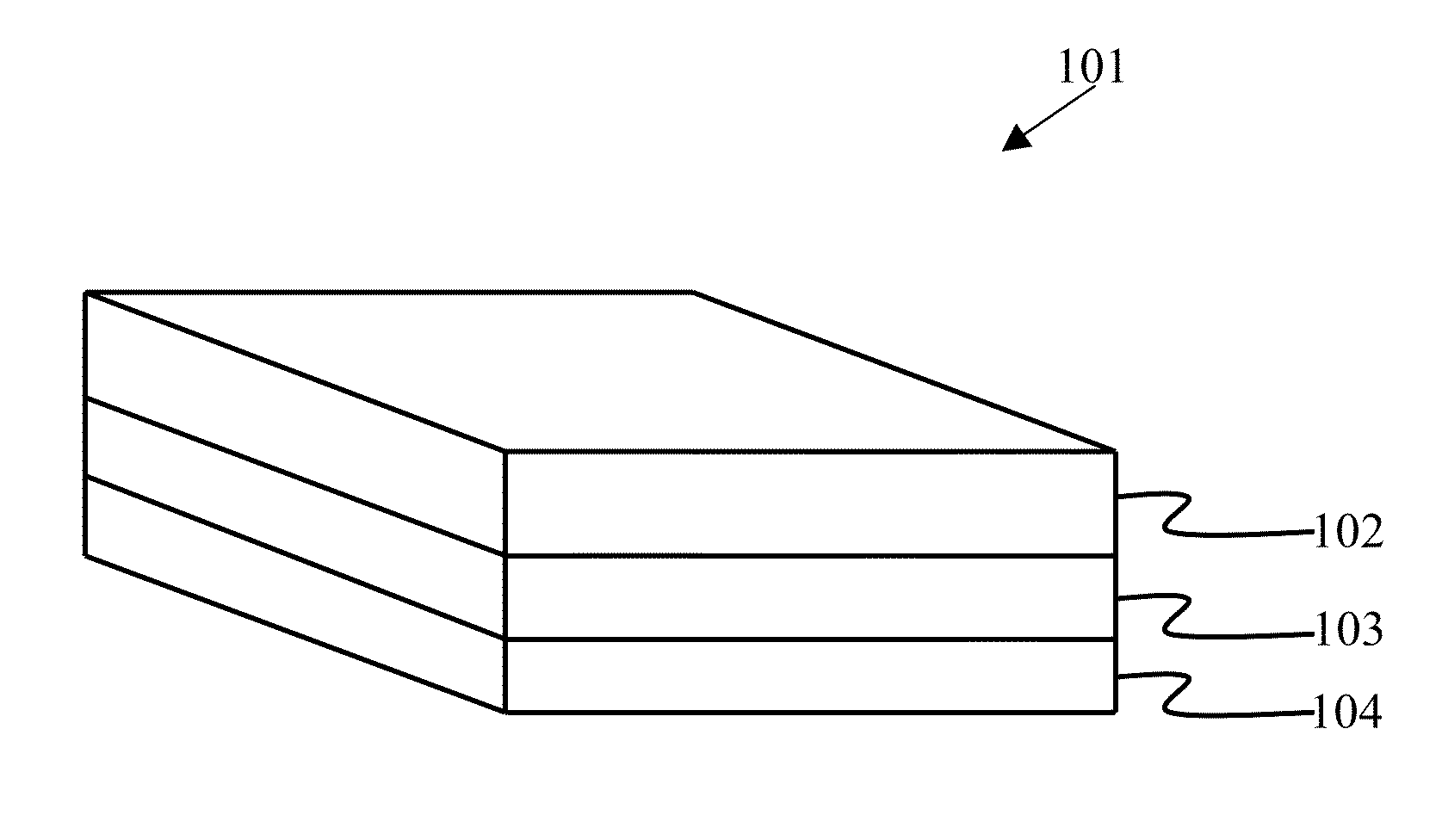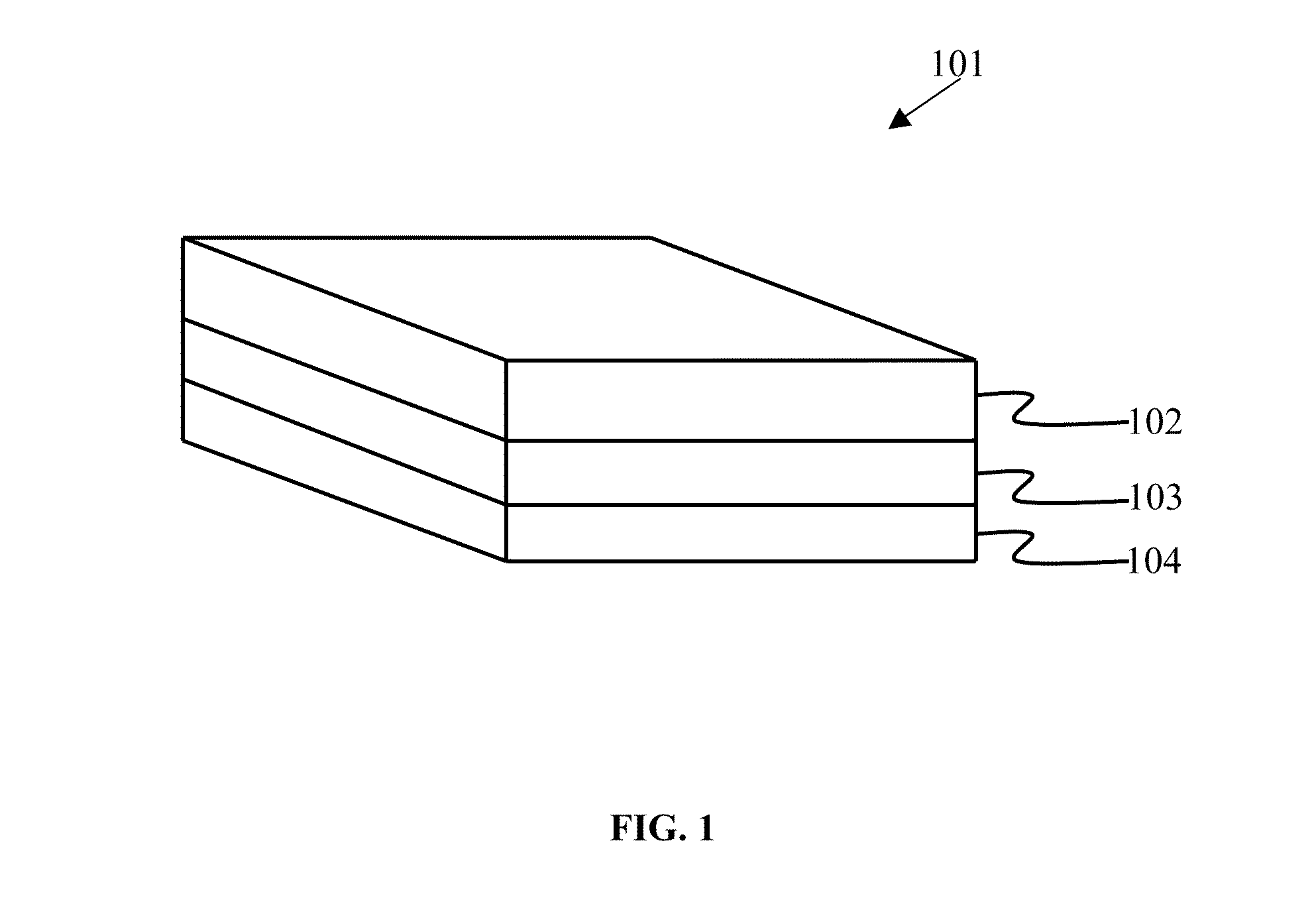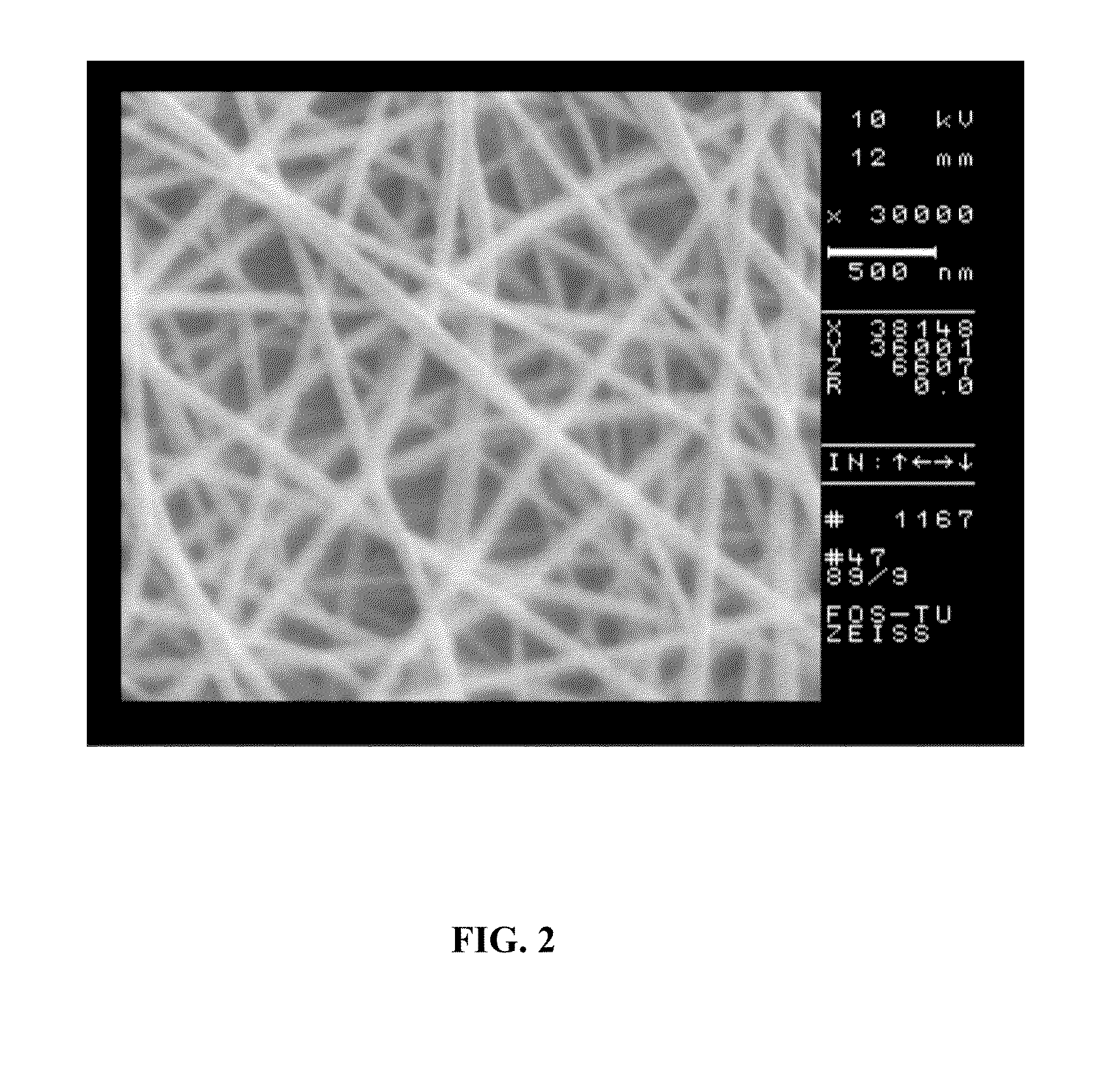Electro spun nanofibrous wound dressing and a method of synthesizing the same
a nanofibrous and wound dressing technology, applied in the field of multi-layered nanofibrous wound dressings, can solve the problems of limiting the application of melilotus officinalis extract as a cream, no/lack of dose control, and difficulty in electro spinning chitosan to a fibrous structure, so as to accelerate the wound healing process, prevent infection, and enhance the mechanical or chemical properties of the wound dressing.
- Summary
- Abstract
- Description
- Claims
- Application Information
AI Technical Summary
Benefits of technology
Problems solved by technology
Method used
Image
Examples
example 1
[0089]Materials:
[0090]Nylon-6, 6 (Polyamide-6, 6) was of technical grade (medium viscous, DSM Co., The Netherlands). Formic acid (98-100%) was purchased from Merck chemicals co. (Germany). Chitosan (LMW, degree of deacetylation, 91.2%) was purchased from Eastar Group (Dong Chen) Co., Ltd., (china). Polyethylene oxide (PEO) (MW 900 KD) was purchased from Acros Organics Co. Glacial acetic acid was purchased from Merck Chemical. Genipin (GP), methyl-2-hydroxy-9-(hydroxymethyl)-3-oxabicyclonona-4,8-diene-5-carboxylate was obtained from Challenge Bioproducts Co. Ltd. (Touliu, Taiwan). Melilotus officinalis extract was obtained from Pars Roos Co. (Iran).
example 2
[0091]Electro Spinning Process:
[0092]The electro spinning process was carried out using Electroris® (FNM Ltd., Iran, www.fnm.ir) as an electro spinner device having a high voltage and a syringe pump controllable in a range of 1-35 kV and 0.1-100 ml / h, respectively. This device is able to control the electro spinning parameters such as an injection rate, a drum speed, a working distance (needle-collector distance), a needle scanning rate and a temperature of the electro spinning media. The polymer solutions were placed into a 5 mL plastic syringe with a metallic blunt-ended 18G needle as a nozzle for electro spinning. A sheet of aluminum foil was wrapped on the drum of an electro spinner device which was used as grounded collector. A syringe pump was fed solution to the needle tip and a positive high voltage was connected to a metallic needle and the collector was connected to ground and the speed of drum was fixed at 15 rpm. The electro spinning process was carried out at 30° C.
example 3
[0093]Producing Nanofibrous Polyamide Outer Layer:
[0094]Nylon-6, 6 (Polyamide-6, 6) was first dissolved in a formic acid / water (90 / 10 v / v) solution to prepare a 20% (w / v) polyamide solution. The polyamide solution was placed into a 5 mL plastic syringe and put into an electro spinner device. The applied voltage, a nozzle to collector distance and an injection rate were fixed at 15 kV, 10 cm and 1 ml / h, respectively. The polyamide nanofibers were formed on the aluminum collector which was used as a support layer for the middle layer and the inner layer.
PUM
| Property | Measurement | Unit |
|---|---|---|
| Temperature | aaaaa | aaaaa |
| Length | aaaaa | aaaaa |
| Length | aaaaa | aaaaa |
Abstract
Description
Claims
Application Information
 Login to View More
Login to View More - R&D
- Intellectual Property
- Life Sciences
- Materials
- Tech Scout
- Unparalleled Data Quality
- Higher Quality Content
- 60% Fewer Hallucinations
Browse by: Latest US Patents, China's latest patents, Technical Efficacy Thesaurus, Application Domain, Technology Topic, Popular Technical Reports.
© 2025 PatSnap. All rights reserved.Legal|Privacy policy|Modern Slavery Act Transparency Statement|Sitemap|About US| Contact US: help@patsnap.com



